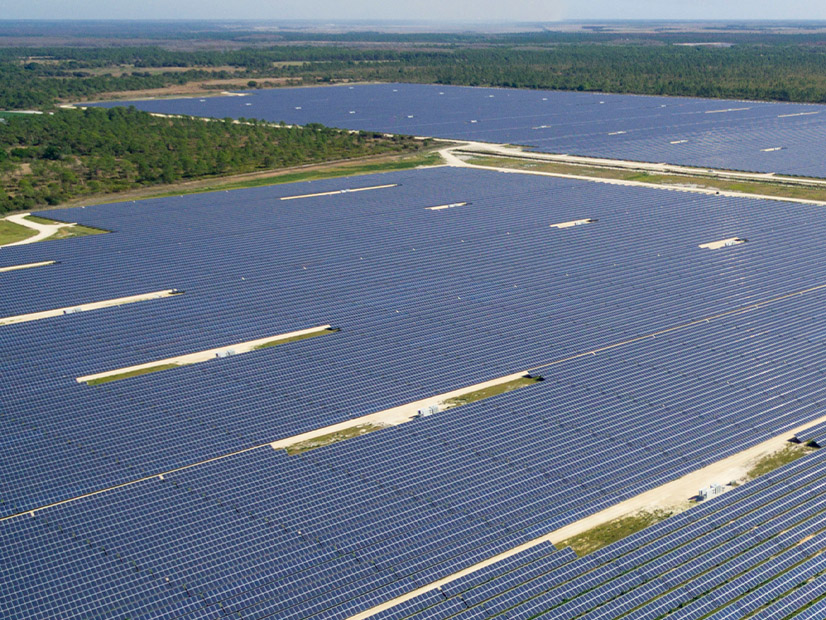
Fact
Inside our industry it’s no secret that net zero — or anything like it — is going to be incredibly expensive if you want to keep the lights on.
There are the global challenges I’ve written about,[1] with the U.N. highlighting the most recent shortfalls.[2] There’s our national picture, where past attempts to make net zero look easy have been discredited.[3] And we’ve had rosy state modeling that, as I’ve pointed out before, would leave California without any electricity for big parts of winter months;[4] ditto for Germany.[5]
The most recent reality checks come from David Rapson and James Bushnell[6] and from The Economist.[7] The case mounts for a Plan B.[8]
Fantasy
Meanwhile there remains a fantasy that net zero is feasible and affordable — because it must be.
Thus Hurricane Ian brought not only mass destruction and suffering, but also predictable attempts to find a silver lining for a net-zero future.
CNN, “60 Minutes,” Newsweek, Yahoo, Fortune, Slate, The Atlantic, MSN, Time, The Hill, Axios, RMI and many others, even the New York Post, ran gushing stories about the Babcock Ranch planned community in southwest Florida, claiming that the lights stayed on during the hurricane because of solar panels and battery storage.[9] Sample headlines:
-
-
- “This 100% solar community endured Hurricane Ian with no loss of power and minimal damage”[10]
- “The U.S.’s ‘first solar-powered town’ kept its electricity and water running during Hurricane Ian — and became a model for how to adapt to climate change”[11]
- “Babcock Ranch: Solar-powered ‘hurricane-proof’ town takes direct hit from Hurricane Ian, never loses electricity”[12]
- “Solar-powered town in Florida kept lights on during Hurricane Ian”[13]
-
One Wee Problem: Ain’t So
Babcock Ranch saw its last sunlight around 3 p.m. on Sept. 26 as Hurricane Ian covered southwest Florida. From then on, there was negligible sunlight for the solar panels to provide power to homes or to recharge the battery, until 9 a.m. on Sept. 29.[14] Total time without sunlight: 66 hours.
After loss of sunlight, the 10-MW/40-MWh battery[15] could have powered 10,000 homes for four hours at average electric home usage of 1 kWh,[16] leaving about 62 hours without anyone getting any power from the solar/battery system at Babcock Ranch.[17]
So how did the lights stay on? The same way they stayed on wherever distribution lines[18] weren’t taken out by Ian: fossil fuel and nuclear generation; nothing to do with solar generation and battery storage.
To summarize, the solar/battery system could have supplied power to some homes for four hours during Ian, while fossil fuel and nuclear generation supplied power for about 62 hours.
One News Organization Got it Right
One news organization got the story right by interviewing the CEO of the company developing Babcock Ranch. Ironically, it’s not even a U.S. news organization, but Canadian.[19] In an interview this CEO honestly says: “We’re the first solar power town in America. We have 150 MW; that’s 700,000 panels on about 340 hectares. Now that’s all fine and good, but when a storm comes in like Ian did, and there’s cloud coverage for a long period of time, you can no longer depend on that solar energy. So we then had to draw from the main utility.”
What a concept: interviewing someone who actually knows something. But for major U.S. media, it’s the happy talk that matters.
Columnist Steve Huntoon, principal of Energy Counsel LLP, and a former president of the Energy Bar Association, has been practicing energy law for more than 30 years.
[1] https://energy-counsel.com/wp-content/uploads/2022/05/We-are-Going-to-Need-a-Plan-B-RTO-Insider-5-10-22.pdf.
[3] https://www.energy-counsel.com/docs/cue-more-pixie-dust.pdf; https://www.energy-counsel.com/docs/Cue-the-Pixie-Dust.pdf; https://www.energy-counsel.com/docs/Grid-Batteries-Kool-Aid-Once-More-with-Feeling-RTO-Insider-12-5-17.pdf; https://www.energy-counsel.com/docs/Alternative-Facts-and-Global-Warming.pdf.
[7] https://www.economist.com/leaders/2022/11/03/the-world-is-missing-its-lofty-climate-targets-time-for-some-realism.
[8] Please see my column referenced in footnote 1.
[9] In addition to headlines below that are individually cited, please see https://www.newsweek.com/babcock-ranch-hurricane-ian-florida-future-town-planning-1752747; https://www.yahoo.com/video/babcock-ranch-weathered-hurricane-ian-210536177.html; https://slate.com/technology/2022/10/hurricane-ian-renewable-energy-florida-babcock-ranch-solar.html; https://www.theatlantic.com/ideas/archive/2022/10/hurricane-ian-florida-real-estate/671629/; https://www.msn.com/en-us/news/us/america-s-first-solar-powered-town-was-a-hurricane-success-story-as-millions-of-other-floridians-lost-power-see-inside-babcock-ranch/ar-AA12ABss?li=BBnbcA1; https://time.com/6225970/climate-proof-towns-extreme-weather/; https://thehill.com/changing-america/sustainability/infrastructure/3685296-solar-powered-community-kept-the-lights-on-during-hurricane-ian/; https://www.axios.com/2022/10/11/hurricane-ian-solar-power-off-grid; https://rmi.org/our-lights-stayed-on-during-hurricane-ian/; https://www.cbsnews.com/news/hurricane-ian-florida-solar-power-babcock-ranch/; https://www.entrepreneur.com/science-technology/a-solar-powered-florida-town-withstands-hurricane-ian/436750; https://www.businessinsider.com/hurricane-ian-solar-powered-florida-town-didnt-lose-power-babcock-ranch-2022-10.
[13] https://nypost.com/2022/10/17/solar-powered-town-in-florida-kept-lights-on-during-hurricane-ian/.
[14] To confirm this, please go to www.wunderground.com and search location “KFLPUNTA222” (Babcock Ranch DM). Under Weather History enter a day, click View, and then scroll down to Solar Radiation data (please note that full sunlight is about 1,000 W/square meter). The data at this location are confirmed by other nearby stations, KFLPUNTA361 and KFLLABEL37.
[15] https://www.utilitydive.com/news/fpl-adds-40-mwh-battery-to-solar-array-claiming-largest-combined-system/518959/.
[16] According to Energy Information Administration data, average home electric usage in Florida is 1,142 kWh/month. https://neo.ne.gov/programs/stats/pdf/145_Residential.pdf. Excluding space heating/cooling (36% of total usage, https://www.myfloridahomeenergy.com/help/library/choices/home-energy-basics/#sthash.TVHeGPY8.dpbs ) because temperatures during Ian were 70 to 80 degrees Fahrenheit, leaves 731 kWh/month or 1 kWh. Average home usage of 1 kWh for 10,000 homes aggregates to 10 MWh (the maximum hourly output of a 10 MW battery), thus draining a 40-MWh battery in four hours.
[17] The solar/battery project is reported to power many more homes than in Babcock Ranch proper. If the project had been limited to supplying just Babcock Ranch’s 2,000 existing homes (https://babcockranch.com/babcock-ranch-exceeds-2000-home-sales/), the battery could have lasted 20 hours, with fossil fuel and nuclear generation supplying the remaining 46 hours.
[18] Power can also be taken out by loss of transmission (as opposed to distribution) lines, but there was reportedly no loss of transmission lines from the hurricane. RTO Insider, Nov. 1, 2022, page 3.

